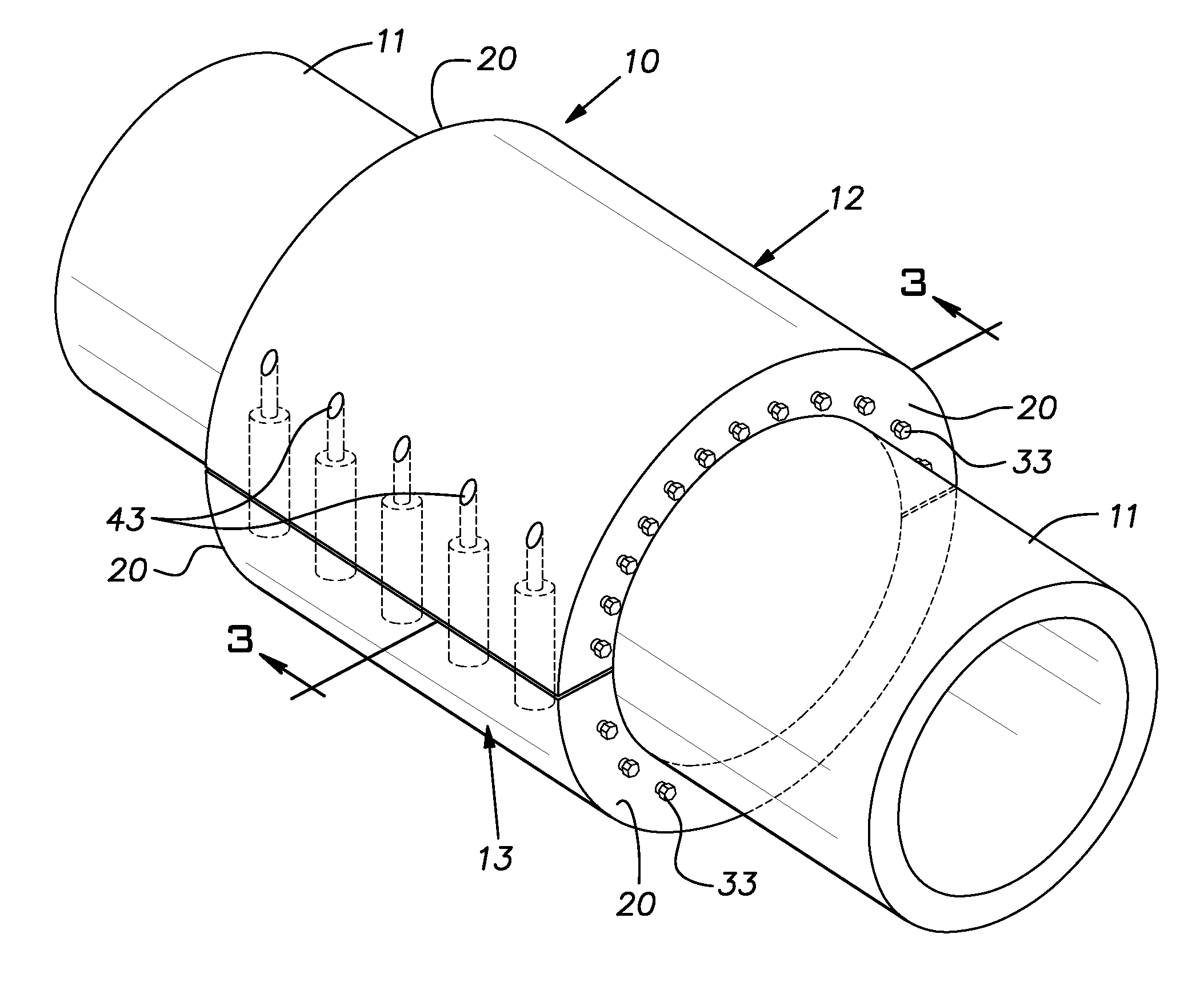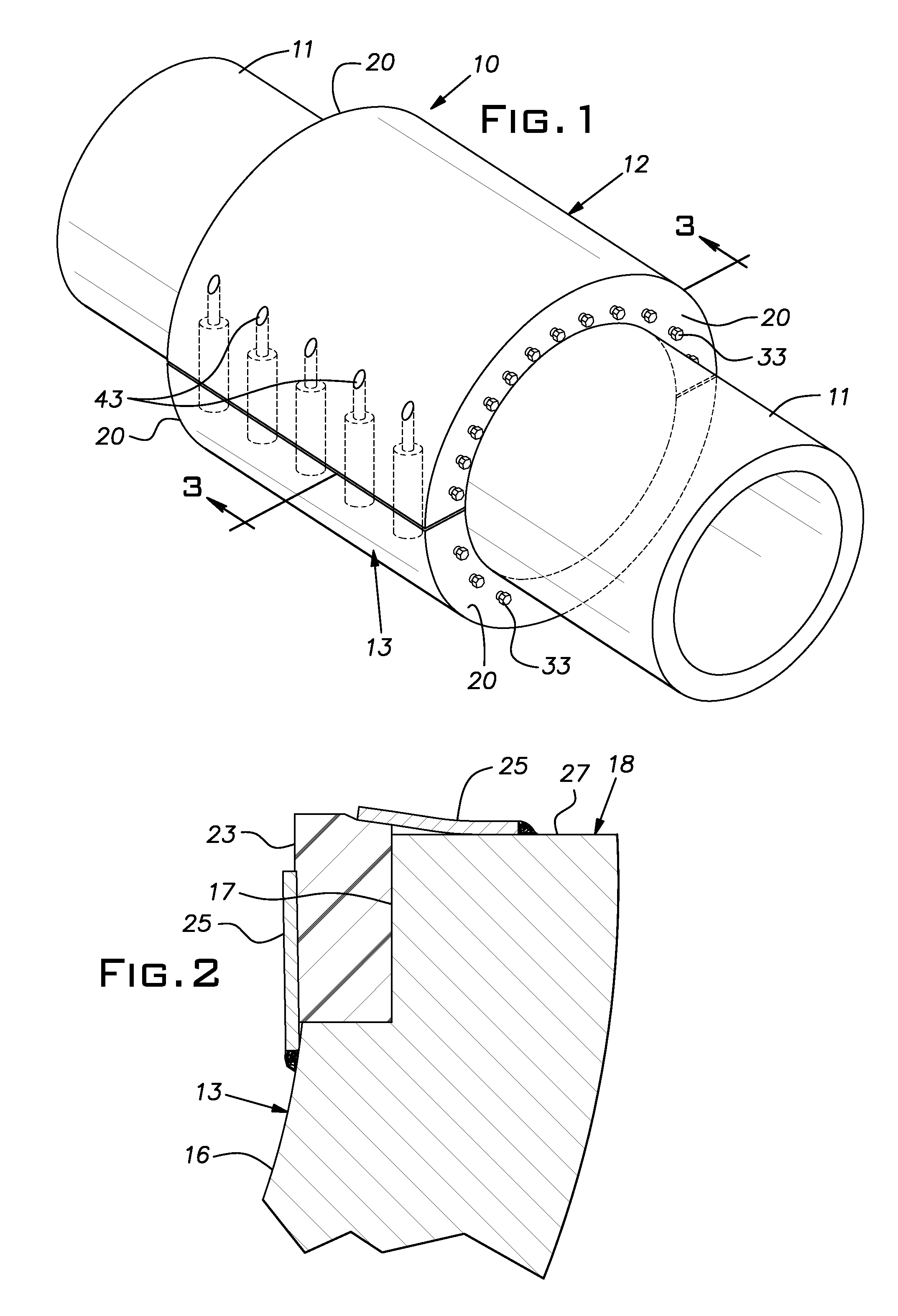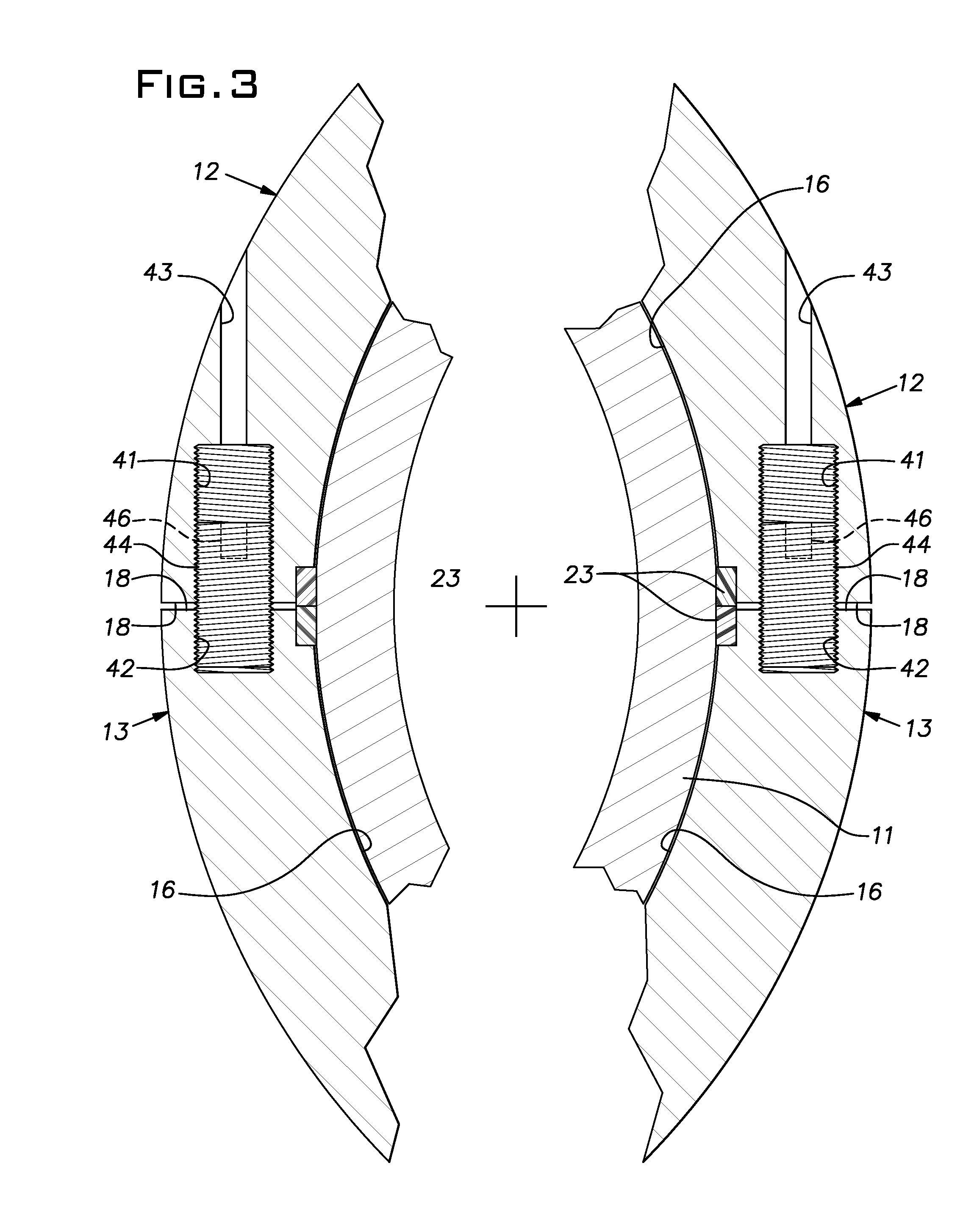Split fitting for pipe
a technology of pipe fittings and split ends, which is applied in the direction of pipes/joints/fittings, pipe elements, mechanical equipment, etc., can solve the problems of high cost of sidebar stock, most prone to imperfections upon inspection, and high cost of traditional segment fabrication process, etc., to achieve easy sealing and welding, easy and less expensive manufacturing process, and less weight
- Summary
- Abstract
- Description
- Claims
- Application Information
AI Technical Summary
Benefits of technology
Problems solved by technology
Method used
Image
Examples
Embodiment Construction
[0014]Referring now to the drawings, there is shown a repair fitting 10 assembled on a pipeline 11 in order to contain leakage from the pipeline due to damage caused by corrosion, accident or other reason. The fitting 10 comprises a hollow cylinder made in two mating half sections or segments 12, 13. The segments 12, 13 in their simplest form are generally uniform in their wall thickness.
[0015]While the segments or half rings 12, 13 can be fabricated from steel tubing, cast of steel, or otherwise made, they commonly will be fabricated from heavy steel plate, typically in a press brake, particularly when large pipe sizes are involved. For example, the segments 12, 13 can be rough formed in a press brake, or with heavy rolls, and then finish machined as required. Typically, the circumferential exterior of the segments 12, 13 can be left as fabricated without machining. The inside cylindrical surfaces 16 of the segments 12, 13 can be machined to assure a clearance fit around the pipeli...
PUM
 Login to View More
Login to View More Abstract
Description
Claims
Application Information
 Login to View More
Login to View More - R&D
- Intellectual Property
- Life Sciences
- Materials
- Tech Scout
- Unparalleled Data Quality
- Higher Quality Content
- 60% Fewer Hallucinations
Browse by: Latest US Patents, China's latest patents, Technical Efficacy Thesaurus, Application Domain, Technology Topic, Popular Technical Reports.
© 2025 PatSnap. All rights reserved.Legal|Privacy policy|Modern Slavery Act Transparency Statement|Sitemap|About US| Contact US: help@patsnap.com



